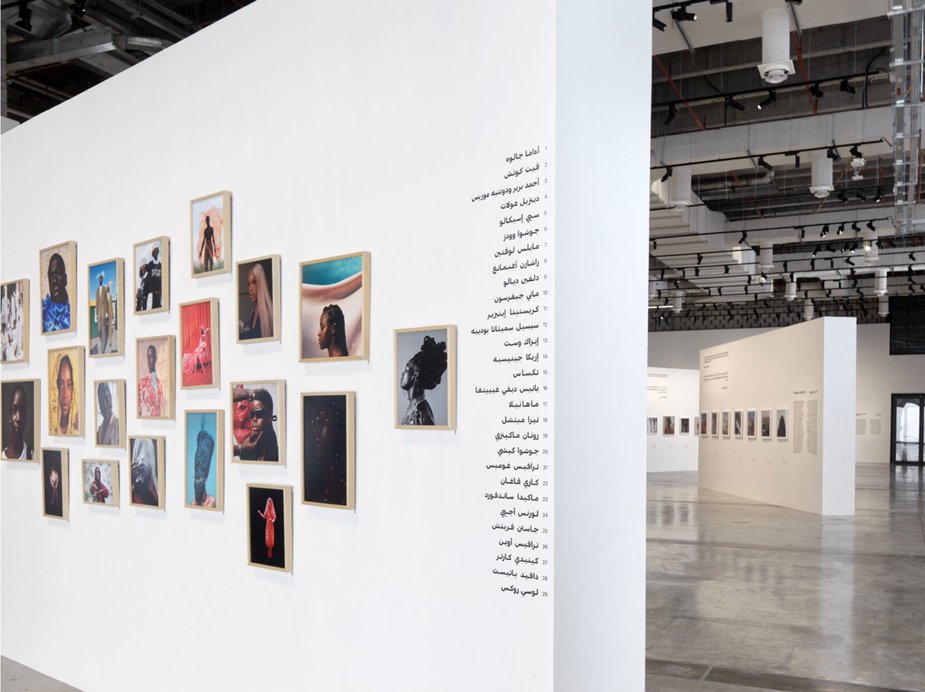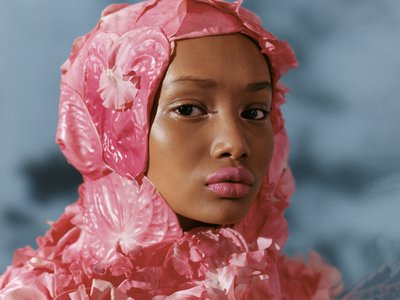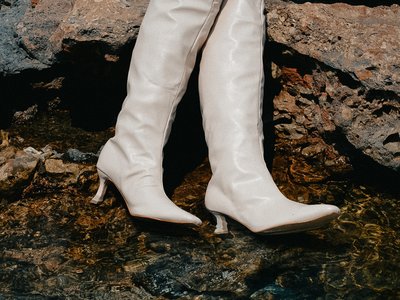Sarah Foryame:
Before we get into talking about The New Black Vanguard: Photography Between Art and Fashion exhibition, I think it is super important to understand your journey into this field, especially for young Black creatives who have experienced or going to experience this important exhibition. You’re an independent writer, curator, and critic, tell us more about how you came to be.
Antwaun Sargent:
I started 10 years ago, writing about artists of my generation living here in New York – artists like Awol Erizku, who is in the book – who were really making their concerns known in the city. I was just so fascinated by their perspectives on not only the sort of mediums that they were working in but also on questions of race, and identity and desire. I just kept on going to their studios and writing about their work and through that process deepening my understanding of Black artistic production and specifically my understanding of this generation’s take on art. Writing led to an impulse to be a curator. I always say that curating is just writing with objects, and I think that once you’ve written a lot about different artists, the mind in a natural way drifts to putting objects into space itself. It has been 10 years since I started writing and entered into the art world, but I just keep on exploring. I got my art education in artist studios, in the galleries of art museums, and through an unrelenting curiosity to know more.
Sarah Foryame:
You highlighted previously that, ‘the artists are operating in different contexts and thinking in different ways.’ The photographers come from various backgrounds geographically, medium-wise but also being of different stages in their career. What was the thinking behind bringing all these image makers together to form The New Black Vanguard?
Antwaun Sargent:
I just saw these photographers thinking about the possibilities of a photo differently. The thread that I could draw between the differences apparent in their practices was a real understanding or curiosity or appreciation about the ways in which dress, self-presentation, and fashion intersect with the histories of Black portraiture. Despite the fact some are working in Lagos and some are working in Los Angeles and some are working in London or working in South Africa or New York, the common thread is their fidelity to exploring the history of photography through these contemporary notions of self-presentation and style. And in bringing them together, they are all sort of mostly young, I think that there’s no one over mid 30’s, so they all in my point of view still at the very beginning of their careers which is important because the way that they have come to photography in a lot of ways is through a contemporary context.
Many of them came to photography through being online, through Tumblr, or Twitter, Instagram or the camera phone. You see that technology in the ways they are constructing images which is also a really important thing to point out. Photography in one way could be understood as the advancement of technology, as technology improved, cameras got better – as we’ve entered this age of digital platforms, social media and cameras in our pockets, our relationship to images have changed. These photographers are the first generation of image makers who are grappling with this new reality. I think that is also a thread that runs through the exhibition, that runs through the book, is the ways in which these photographers built their own audiences and made their concerns known first outside of traditional magazines and museums which allowed them a certain freedom to make images from their space of community.
Sarah Foryame:
The history of representation of the Western Asian and North African region is very much a discussion that has historically and continues to take place. Tasweer has consciously called for the term “Middle East” to be referred to as Western Asia and North Africa. Photography has been at the forefront of shaping how the region, its culture and diversity of people are seen and also unseen. What were your thoughts when you knew of the potential of exhibiting this show here in the region?
Antwaun Sargent:
The camera has played a role in how we see everything and how we see everyone. In particular in relation to this exhibition The New Black Vanguard, what we are talking about is the reimagining of blackness through a new generation. If you think about some of the historical anthropological images that have come to dominate the imagination about Western Asia or North Africa that has also happened around the world, in America and Europe, so I think this exhibition is one way to show that folks who generally or historically had images taken of them are now doing the taking of photos, they are fighting photography with photography. Having a show in Western Asia allows for us to have that conversation to deepen our understanding of images being constructions of desire, being constructions of beauty, which is not necessarily the truth but it is a point of view worth considering. So being able to present The New Black Vanguard in this context allows us to have these sorts of conversations in a local context and address questions like what is the role of photography in Western Asia and North Africa? A show like this is also more broadly about the histories of image making that have disempowered and empowered folks. In The New Black Vanguard, you see photographers thinking about ways in which they can use the camera to express above all else their individual desires.


